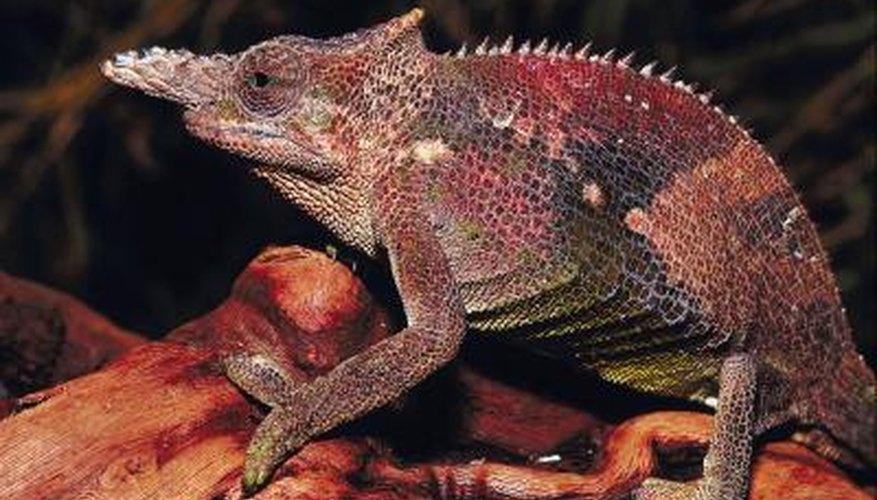There are over 160 chameleon species, each of which has its own life cycle. The life cycle includes its birth, process of maturity, reproductive cycle, gestation period and its death. Although many chameleon species share similar life cycles, they also have some interesting variances that stand out from the rest.
Egg
Chameleons reproduce rapidly; many species, including the veiled chameleon, reproduce three to four times per year and between 30 to 80 eggs at once. Chameleon eggs normally hatch anywhere between 30 and 60 days after being laid. The Malgasy chameleon spends nearly three-quarters of its life inside of an egg.
Reproduction and Gestation
The gestation period, which is the length of time a female remains pregnant, ranges between 20 and 30 days. The chamaeleo jacksonii (Jackson's chameleon), has a gestation period of 170 to 220 days. Most female chameleons are oviparous, which means they lay eggs that hatch outside of the body. There are a very few species of the chameleon, such as the Jackson's chameleon, that are viviparous; the eggs hatch inside of the body. Once the eggs are ready to be laid, the female chameleon digs a hole in the ground, lays the eggs in the hole and buries them under sand or dirt. The female then leaves her offspring to survive on their own.
- The gestation period, which is the length of time a female remains pregnant, ranges between 20 and 30 days.
- There are a very few species of the chameleon, such as the Jackson's chameleon, that are viviparous; the eggs hatch inside of the body.
Maturity
After hatching, chameleons instinctively begin to hunt insects within a few days. Left unprotected, some are killed by predators while others manage to survive. Hatchlings resemble full-grown adult chameleons but are much smaller; their markings are also not as colourful. Many species are sexually mature usually within four to five months. This is necessary, as chameleons do not have a long lifespan.
- After hatching, chameleons instinctively begin to hunt insects within a few days.
- Hatchlings resemble full-grown adult chameleons but are much smaller; their markings are also not as colourful.
Lifespan
A chameleon's lifespan is relatively short, with the females having a shorter lifespan than males. Female chameleons live anywhere between three and five years, while males live between five and eight years. There are exceptions to every rule though. Some chameleons, such as the Jackson's chameleon, have been known to live over 10 years. On the opposite end of the spectrum, the Malgasy chameleon lives for only four to five months after hatching. As of 2011, no other four-legged animal is known to have such a rapid rate of growth with such a short lifespan.
- A chameleon's lifespan is relatively short, with the females having a shorter lifespan than males.
- Some chameleons, such as the Jackson's chameleon, have been known to live over 10 years.
